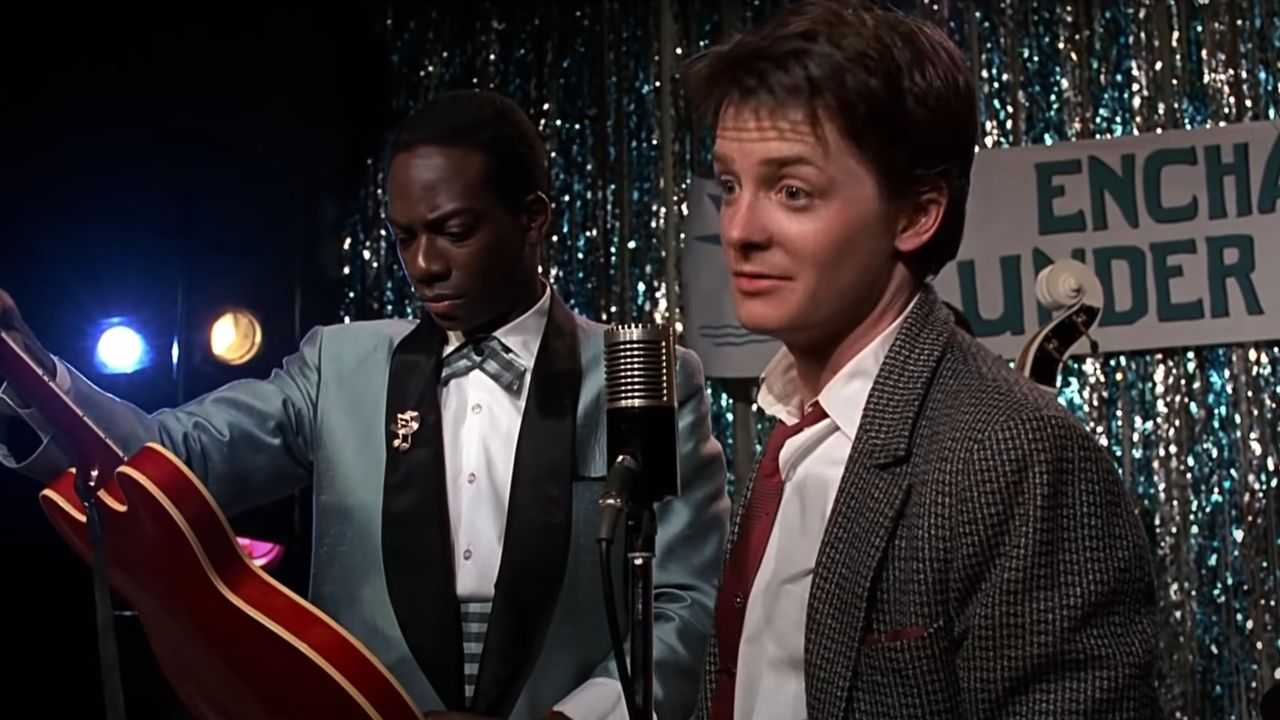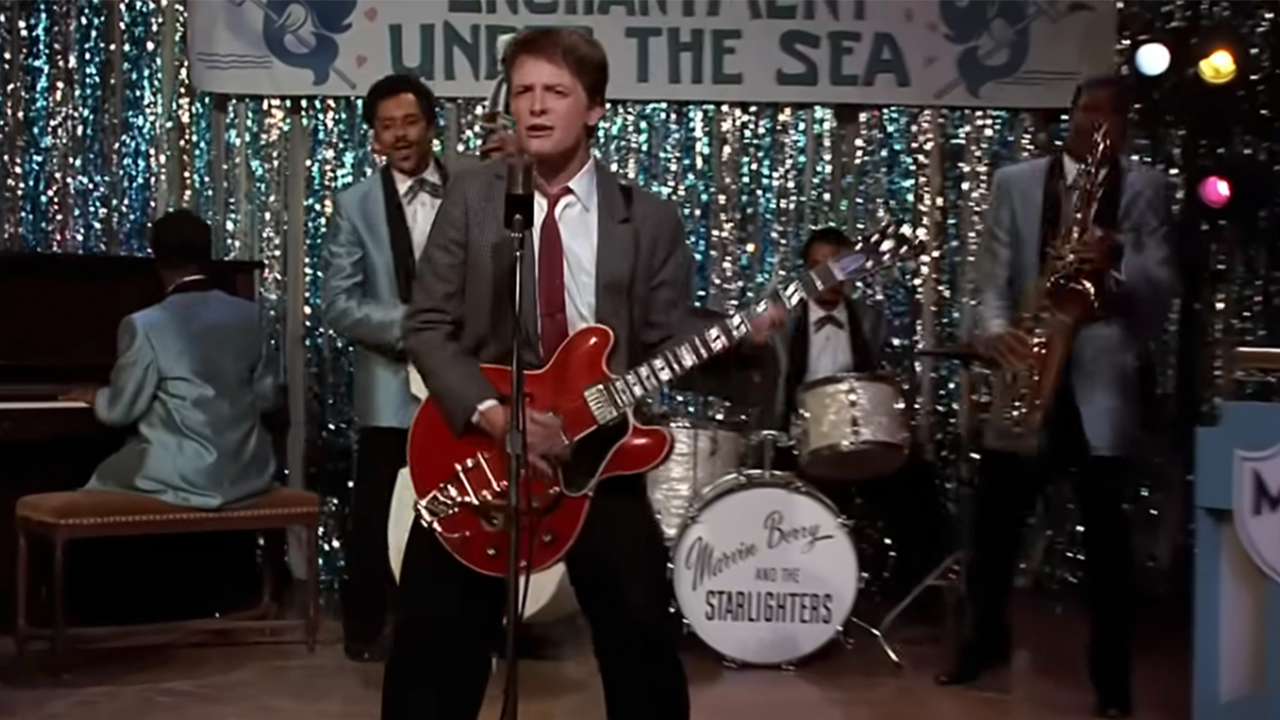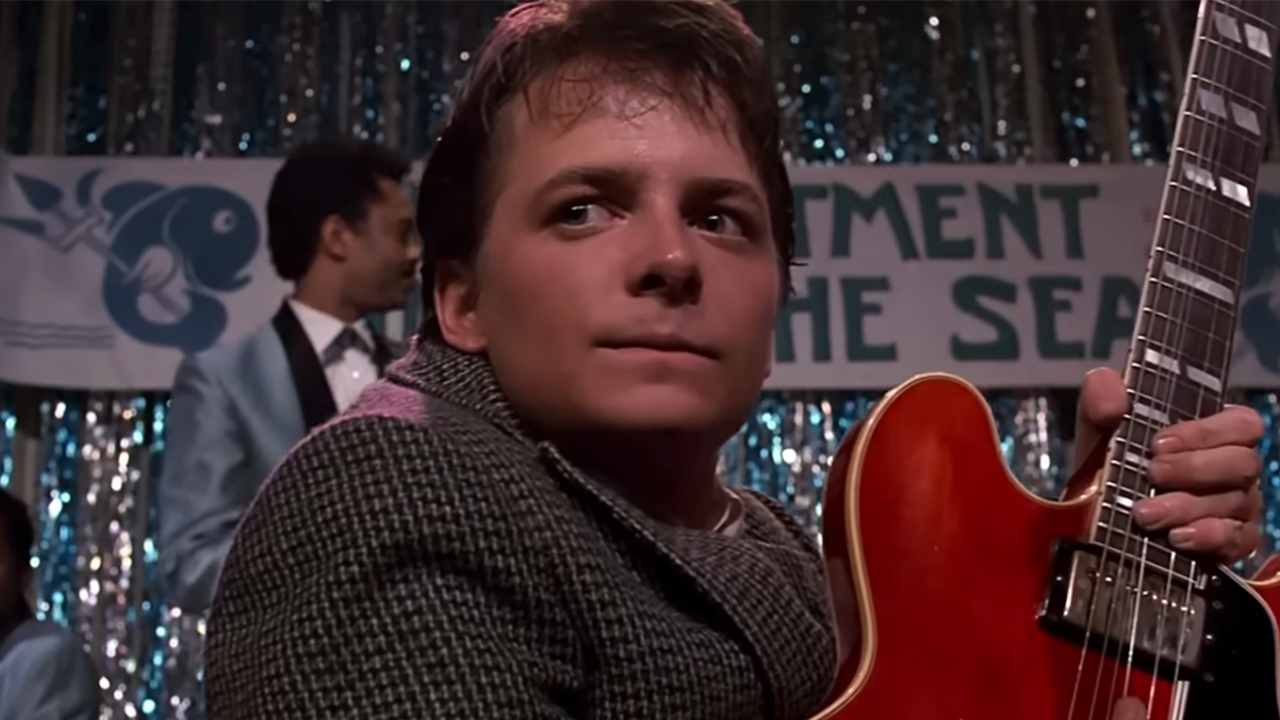
For decades, fans have debated the logic of time travel in the movie Back to the Future. People, particularly online, enjoy analyzing how time travel is portrayed in films. One often-discussed issue involves the guitar Marty McFly (Michael J. Fox) plays – a Gibson ES-350 – during the “Enchantment Under The Sea” dance in 1955. Surprisingly, this isn’t a plot hole caused by the time travel itself, but a choice made by the film’s art department, as Michael J. Fox explains in his new memoir.

The Guitar In The Movie Wasn’t Released By Gibson Until 1958
Those familiar with Back to the Future remember that Marty travels from October 26, 1985, to November 5, 1955. To ensure his parents fall in love and preserve the future, he has to fill in for Marvin Berry in the band at the school dance. He uses Marvin’s Gibson ES-345 guitar, a semi-hollow body model. Gibson is famous for its ES series, which began in 1936 with the ES-150, and the company has been making ES guitars with many different models ever since.
Guitar experts often note a continuity error in the film: the ES-345 guitar model, similar to the one featured, wasn’t released until 1958 – three years after the dance scene it appears in. In his book, Future Boy: Back to the Future and My Journey Through the Space-Time Continuum, published via Syfy, author Fox discusses this and other details.
A recurring detail that both guitar enthusiasts and fans of Back to the Future have noticed is a timeline inconsistency. However, this is only really significant for those dedicated viewers who meticulously analyze every aspect of the movie and its timeline.
Fox News reports that there was a lot of discussion about whether a certain issue was a deliberate choice. However, that discussion is now over – it wasn’t a mistake caused by time travel, and it wasn’t intentional either.
This wasn’t a deliberate nod to pop culture; the filmmakers just chose the ES-345 guitar because its wine-red color reminded them of the famous guitar Chuck Berry played while performing his signature duckwalk.
So, it turns out that guitar they used was just a stand-in, chosen because it looked like one of Chuck Berry’s. He actually played a lot of different models, especially an ES-350T, but that’s just one of those little details. And speaking of things that don’t quite add up, let’s talk about the song Marty’s playing, and that weird phone call Marvin makes to his “cousin” Chuck Berry – remember, Marvin isn’t a real person!
‘Johnny B. Goode’ May Have Been Written Before The Dance, Too
Chuck Berry first recorded his famous song “Johnny B. Goode” in late 1957, and it came out in 1958 – the same year Gibson introduced the ES-345 guitar. He reportedly began writing the song a couple of years earlier, around 1955. According to Marvin, the unique sound Berry was searching for was likely already developed by the time of the November 1955 dance.
In May 1955, Chuck Berry recorded another of his signature songs, “Maybellene,” at Chess Records in Chicago. It was released in June, several months before the popular dance craze took off. While “Maybellene” doesn’t have a famous opening riff like “Johnny B. Goode,” it’s a clear example of the style that would make Chuck Berry a global star.

The Famous Riff Is Even Older
Interestingly, Chuck Berry admitted the opening riff of his song was inspired by Louis Jordan’s 1946 song, “Ain’t That Just Like a Woman.” The two riffs are strikingly similar. It’s likely Berry was already familiar with, and perhaps even performing, the riff long before he spoke with Marvin in 1955.
So, what’s the big deal with getting every detail right? I’m with Michael J. Fox – it’s a fantastic scene in a truly great ’80s movie. Let’s just appreciate it! And good news: Back to the Future is returning to cinemas for a short time starting next week!
Read More
- Mobile Legends: Bang Bang (MLBB) Sora Guide: Best Build, Emblem and Gameplay Tips
- Clash Royale Best Boss Bandit Champion decks
- Best Hero Card Decks in Clash Royale
- All Brawl Stars Brawliday Rewards For 2025
- Best Arena 9 Decks in Clast Royale
- Vampire’s Fall 2 redeem codes and how to use them (June 2025)
- Brawl Stars December 2025 Brawl Talk: Two New Brawlers, Buffie, Vault, New Skins, Game Modes, and more
- Clash Royale Witch Evolution best decks guide
- Clash Royale Furnace Evolution best decks guide
- Mobile Legends: Bang Bang (MLBB) Marcel: Hero overview, skill analysis, and release date
2025-10-22 19:09